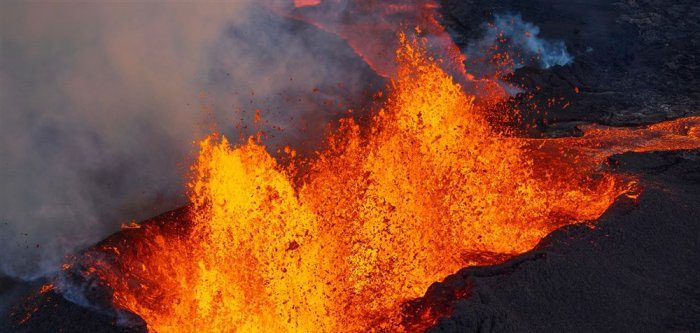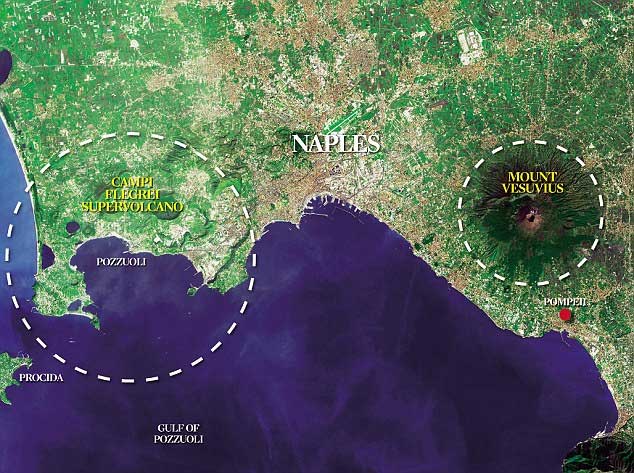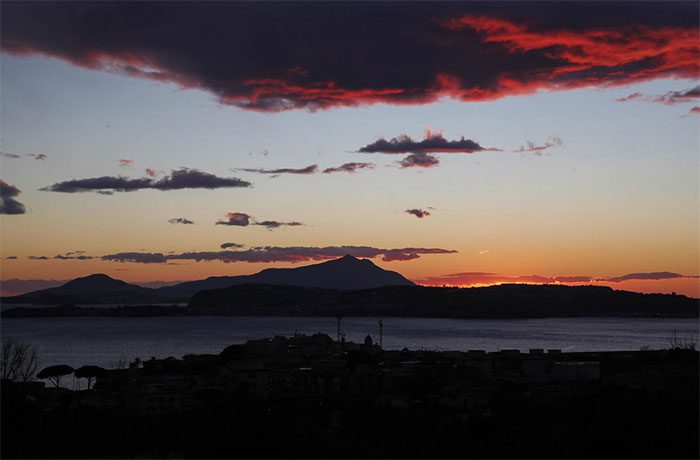A “supervolcano” that has been dormant for a long time in Italy is approaching the likelihood of an eruption after nearly six centuries.
According to a study from the Italian Institute of Geophysics and Volcanology in collaboration with University College London, a “supervolcano” in Italy, whose summit is home to half a million residents, is set to erupt for the first time since 1538. Scientists warn that such an event could have catastrophic consequences.

Scientists at the Italian National Institute of Geophysics and Volcanology report that the Campi Flegrei volcano in southern Italy is at risk of eruption, similar to the eruption at Mauna Loa, Hawaii (in the image). (Source: EPA-EFE).
The study utilized a volcanic crack model to explain the seismic activity and ground uplift in the area. There have been tens of thousands of earthquakes surrounding the Campi Flegrei volcano (located near Naples), and the town of Pozzuoli, situated atop Campi Flegrei, has been uplifted by approximately 4 meters due to geological activity. The research indicates that the earthquakes and ground uplift have stretched parts of the volcano “close to the breaking point,” and the ground appears to be cracking rather than bending. Researchers point out that the weakening of the crust around Campi Flegrei is “making an eruption more likely.”
Campi Flegrei translates to “burning fields.” This volcano has been “on edge” for over 70 years, with unrest episodes lasting up to two years occurring in the 1950s, 1970s, and 1980s. In the past decade, another period of unrest has occurred, although it is considered less significant than previous episodes.
The research concludes that while Campi Flegrei may be “on the verge of breaking,” there is no guarantee that this will actually lead to an eruption. Professor Christopher Kilburn, a geoscience researcher at University College London and the lead author of the study, stated: “Our new research confirms that Campi Flegrei is getting closer to the breaking point. However, this does not guarantee that an eruption [will definitely occur].”
The professor further explained: “The breaking could open a crack through the crust, but magma still needs to be pushed into the right position for an eruption to happen.”

Illustration of the location of Campi Flegrei and its impact area.
This finding has been corroborated by Dr. Nicola Alessandro Pino from the Vesuvius Observatory, who reported monitoring results “showing that parts of the volcano are becoming weaker.”
Dr. Pino noted: “This means it could break, even though the tectonic stresses pulling the crust apart are smaller than during the last crisis 40 years ago.”
Approximately half a million Italians currently live in the caldera formed by this supervolcano’s summit, and an additional 1.5 million are believed to live within the vicinity of a potential explosion. Professor Kilburn stated that this study, described as “the first of its kind to predict cracking at an active volcano,” marks “a significant step in our goal to improve volcanic eruption forecasting worldwide.”

Scenic view of the coastline of Pozzuoli and the Campi Flegrei volcano. (Photo: Getty Images).
He explained: “This is the first time we have applied our model, based on the physics of how rock layers break, in real-time for any volcano.”
The Italian scientist remarked: “The model we first used was in 2017, and since then Campi Flegrei has behaved as we predicted, with an increasing number of small earthquakes indicating pressure from below.”
According to Professor Kilburn, scientists “will now have to adjust their processes to estimate the probability of new pathways opening for magma or gas to reach the surface.”


















































